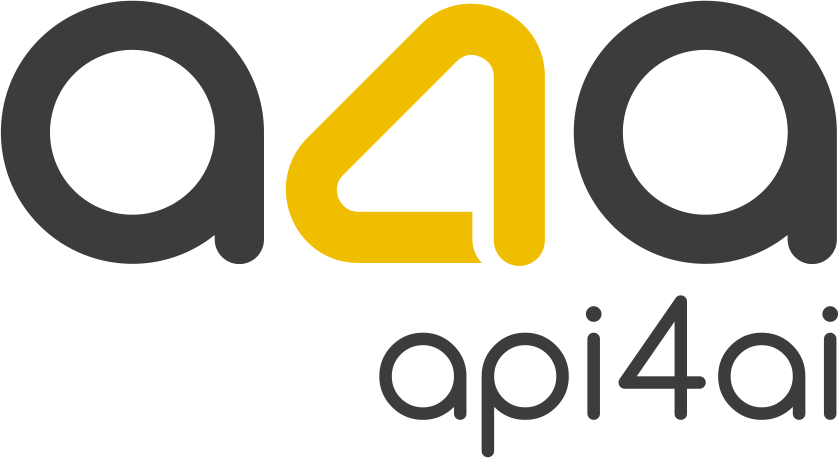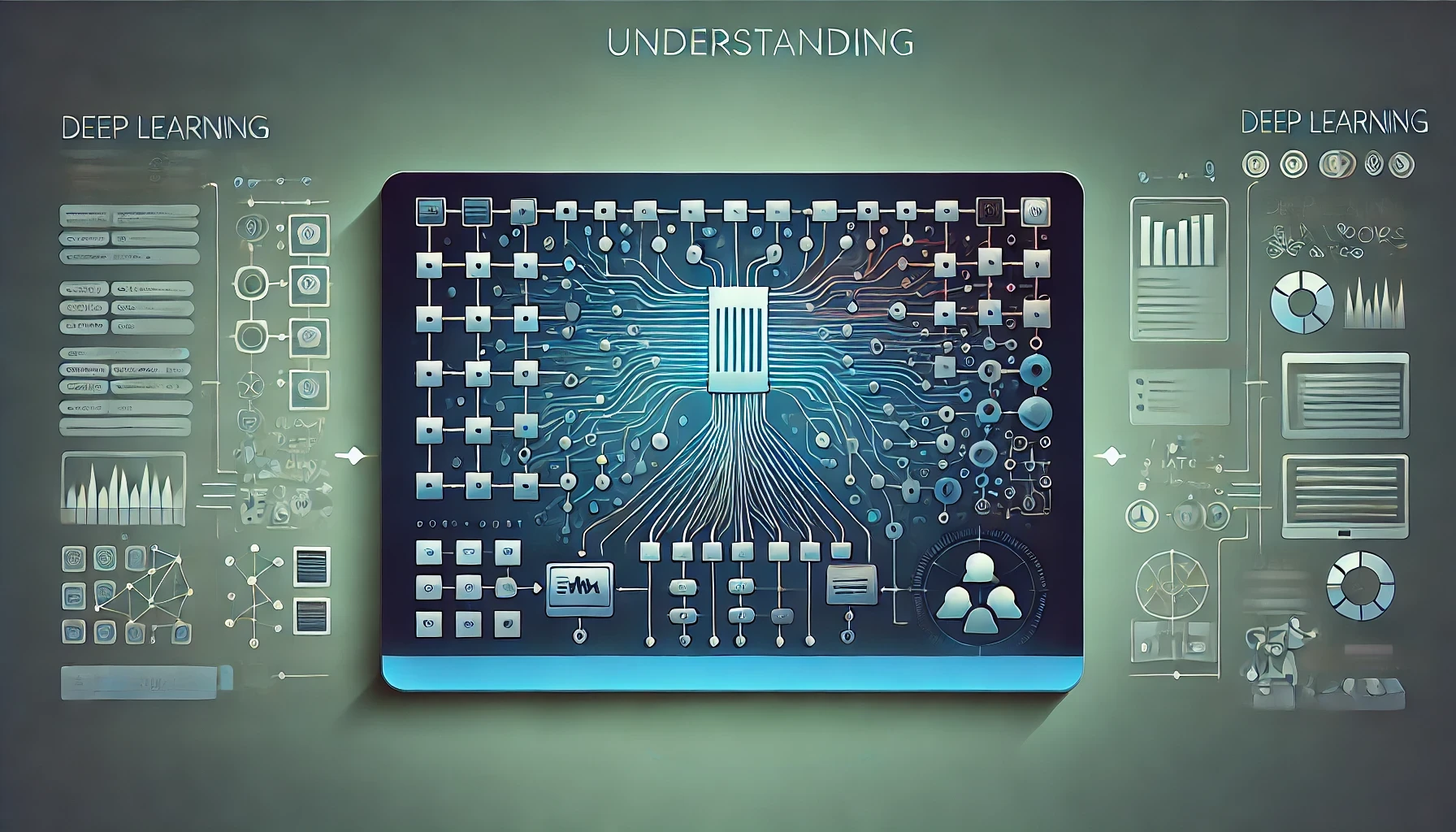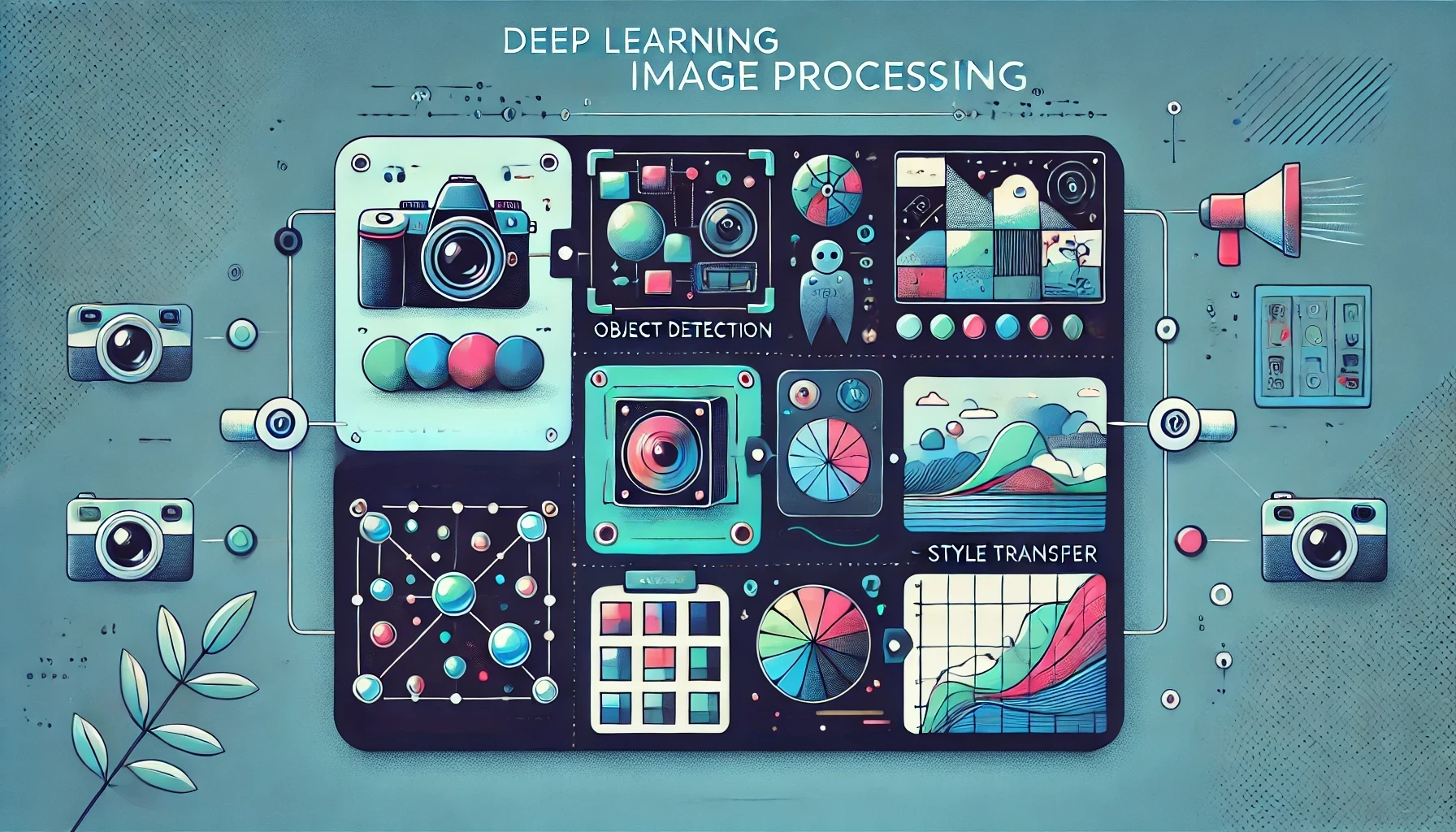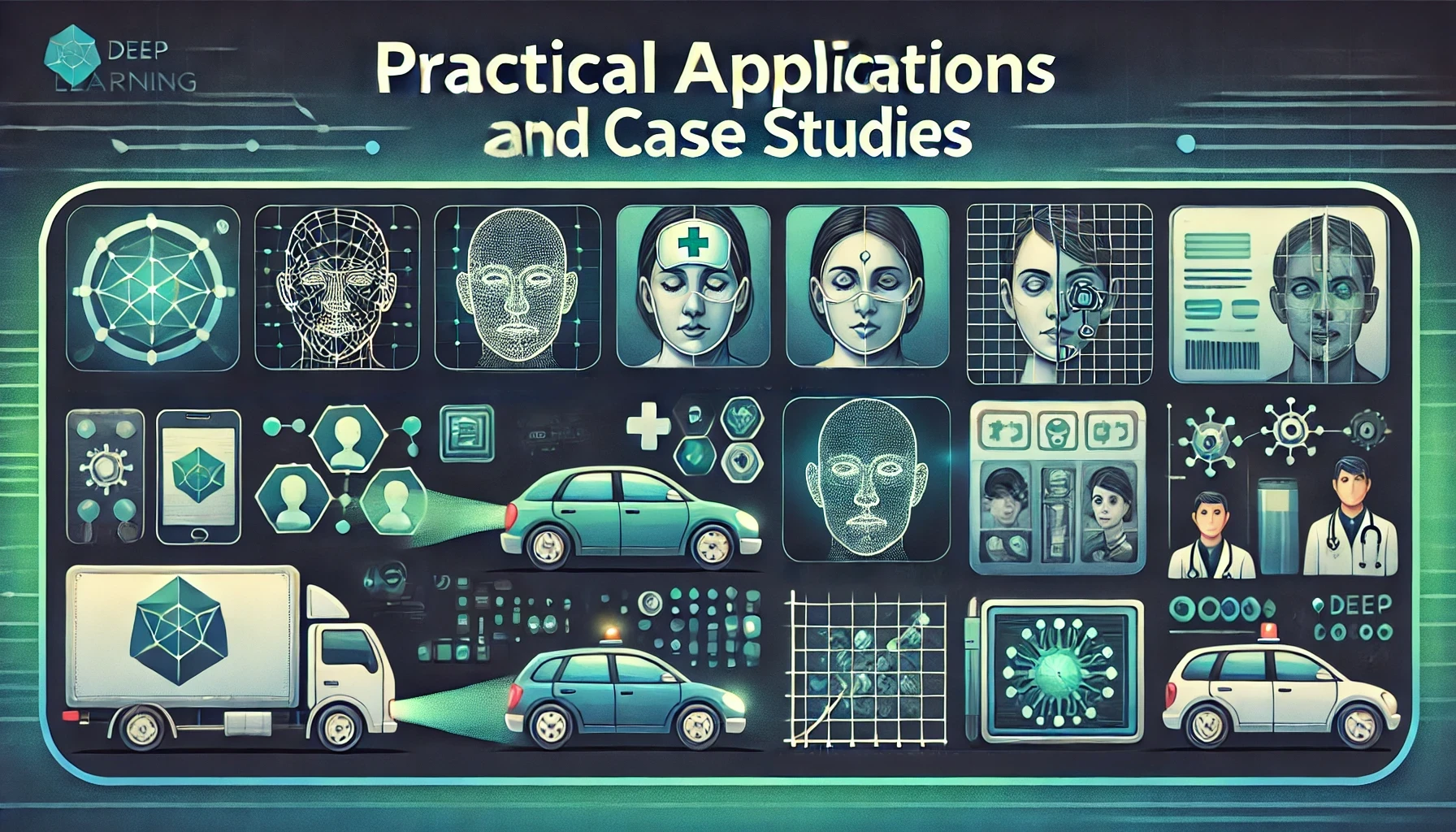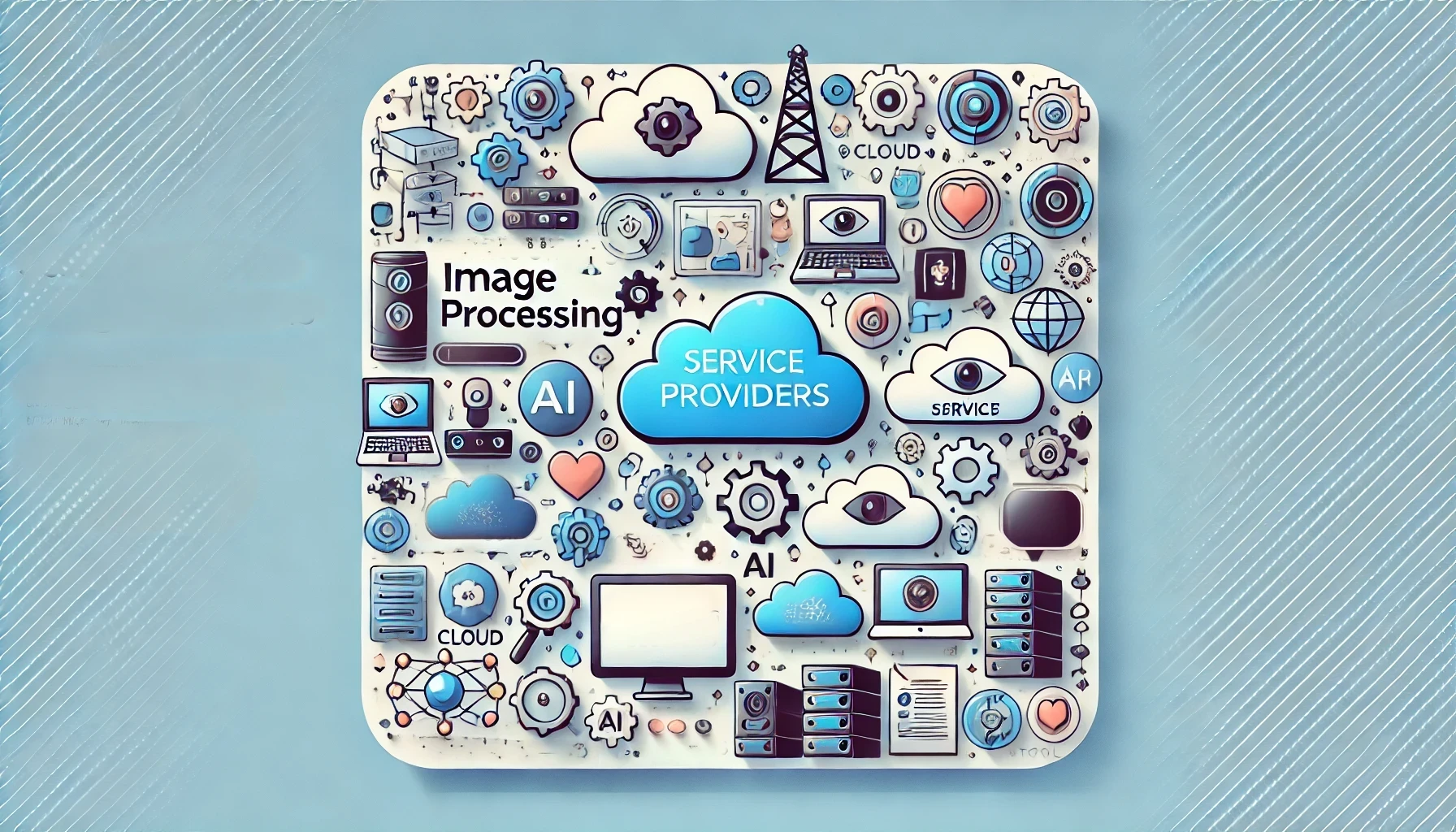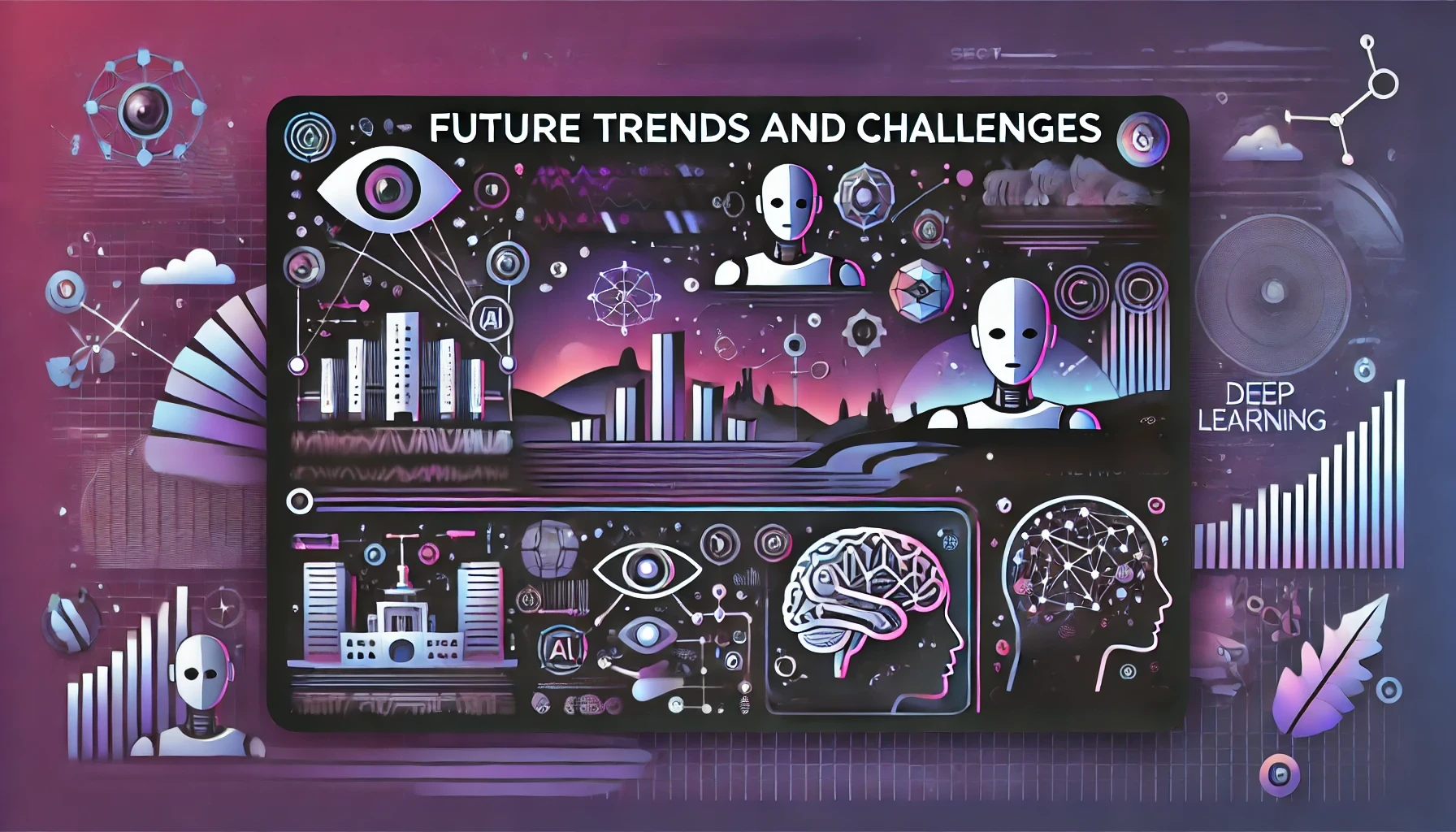Mastering Deep Learning: Key Concepts and Its Impact on Image Processing
Introduction
Imagine a world where a computer can identify diseases in medical scans more accurately than human doctors, enhance the quality of old family photos to a stunning degree, or even create entirely new artworks from scratch based on simple text descriptions. This isn't the distant future—this is the power of deep learning today. One of the most revolutionary developments in artificial intelligence, deep learning has drastically transformed the field of image processing. In recent years, we've witnessed deep learning algorithms outperform humans in tasks such as image recognition and classification, leading to groundbreaking advancements across various industries.
Understanding deep learning and its profound impact on image processing is crucial in our increasingly digital world. From improving security through enhanced facial recognition systems to enabling autonomous vehicles to interpret their surroundings, the applications of deep learning in image processing are vast and varied. By mastering these concepts, businesses and individuals can leverage this technology to innovate and stay competitive in a rapidly evolving technological landscape.
In this blog post, we will delve into the key concepts of deep learning and explore how they are applied to image processing. We will cover the fundamentals of neural networks, including Convolutional Neural Networks (CNNs), Generative Adversarial Networks (GANs), and the latest advancements in Large Language Models (LLMs) such as GPT-4. Furthermore, we'll discuss practical applications and real-world case studies, and highlight leading service providers offering cutting-edge image processing solutions. By the end of this post, you'll have a comprehensive understanding of how deep learning is reshaping the field of image processing and the potential it holds for the future.
Understanding Deep Learning
1. Definition and Evolution
Definition of Deep Learning
Deep learning is a subset of machine learning that involves neural networks with many layers—hence the term "deep." These networks are designed to simulate the way humans learn from a vast amount of data. By leveraging large datasets and computational power, deep learning models can perform complex tasks such as image recognition, natural language processing, and more with remarkable accuracy.
Brief History and Evolution from Machine Learning to Deep Learning
The journey from traditional machine learning to deep learning has been transformative. Early machine learning algorithms relied on manually crafted features and simple models. However, with the advent of deep learning, we have seen the rise of neural networks that automatically learn features from raw data. This shift began in the 1940s with the creation of the first neural networks and gained momentum in the 1980s and 1990s with the development of backpropagation. The real breakthrough came in the 2010s, driven by increased computational power, availability of large datasets, and advances in algorithms, marking the era of deep learning.
2. Core Principles
Neural Networks: Explanation and Basic Structure
At the heart of deep learning are neural networks, which are computational models inspired by the human brain. A neural network consists of interconnected nodes (neurons) organized into layers. Each connection has an associated weight that adjusts as learning progresses, enabling the network to model complex patterns in data.
Layers in Neural Networks
Input Layer: The input layer receives the raw data, such as pixel values from an image.
Hidden Layers: These intermediate layers perform transformations on the input data, extracting features and patterns. The depth of a neural network is determined by the number of hidden layers.
Output Layer: The output layer produces the final prediction or classification, such as identifying objects in an image.
Activation Functions
Activation functions introduce non-linearity into the network, allowing it to model complex relationships. Common activation functions include:
Sigmoid: Maps input values to a range between 0 and 1.
Tanh: Similar to sigmoid but maps inputs to a range between -1 and 1, often used in hidden layers.
ReLU (Rectified Linear Unit): Outputs the input directly if positive, otherwise, it outputs zero, which helps in mitigating the vanishing gradient problem.
3. Types of Neural Networks
Convolutional Neural Networks (CNNs)
CNNs are specifically designed for processing image data. They use convolutional layers to automatically and adaptively learn spatial hierarchies of features from input images. CNNs are the backbone of most modern image recognition systems, used in applications ranging from facial recognition to medical imaging.
Recurrent Neural Networks (RNNs)
RNNs are ideal for sequential data, where the order of data points matters. They are used in tasks such as language modeling and time series prediction. RNNs maintain a memory of previous inputs in the sequence through their hidden state, enabling them to model temporal dependencies.
Generative Adversarial Networks (GANs)
GANs consist of two neural networks, a generator and a discriminator, that compete against each other. The generator creates new data instances, while the discriminator evaluates their authenticity. This adversarial process leads to the generation of highly realistic data, such as images and videos, and is used in applications like image synthesis and enhancement.
Large Language Models (LLMs)
LLMs, such as GPT-4, focus primarily on processing and generating text. However, they also have cross-modal capabilities that allow them to handle tasks involving both text and images, such as image captioning and visual question answering. These models leverage vast amounts of textual data to understand and generate human-like text, enhancing image processing applications by providing contextual understanding.
4. Training Deep Learning Models
Data Preparation and Augmentation
The quality and quantity of data are crucial for training effective deep learning models. Data preparation involves cleaning and preprocessing the data to ensure it is suitable for training. Data augmentation techniques, such as rotating or flipping images, are used to artificially increase the diversity of the training dataset, improving the model's robustness and generalization.
Loss Functions and Optimization Techniques
Loss functions measure the difference between the model's predictions and the actual values, guiding the training process. Common loss functions include Mean Squared Error (MSE) for regression tasks and Cross-Entropy Loss for classification tasks. Optimization techniques, such as Stochastic Gradient Descent (SGD) and Adam, adjust the model's weights to minimize the loss, iteratively improving the model's performance.
Overfitting and Regularization Methods
Overfitting occurs when a model performs well on training data but poorly on new, unseen data. Regularization methods are used to prevent overfitting, ensuring the model generalizes well. Techniques include:
Dropout: Randomly deactivating neurons during training to prevent the network from becoming too reliant on any single node.
L1/L2 Regularization: Adding a penalty to the loss function based on the magnitude of the model's weights, encouraging simpler models.
By understanding these foundational concepts, you can appreciate the complexities and potentials of deep learning in transforming image processing and beyond.
Key Concepts in Deep Learning
1. Convolutional Neural Networks (CNNs)
Explanation of Convolutions and Pooling Layers
Convolutional Neural Networks (CNNs) are designed specifically for processing and analyzing visual data. The core idea of CNNs is to use convolutional layers to automatically and adaptively learn spatial hierarchies of features from input images.
Convolutional Layers: These layers apply a series of filters (kernels) to the input image. Each filter slides over the image, performing a dot product between the filter and the local regions of the input. This operation creates feature maps that capture various aspects of the image such as edges, textures, and patterns.
Pooling Layers: After convolutional layers, pooling layers are used to reduce the spatial dimensions of the feature maps, which helps in reducing the computational complexity and preventing overfitting. The most common type of pooling is max pooling, which takes the maximum value in each patch of the feature map.
Common Architectures
LeNet: One of the earliest CNN architectures, designed for handwritten digit recognition.
AlexNet: Introduced the use of ReLU activation and dropout for regularization, significantly outperforming previous methods in image classification tasks.
VGG: Known for its simplicity and use of very small (3x3) convolution filters, enabling deep but computationally manageable models.
ResNet: Introduced residual learning to address the problem of vanishing gradients, allowing the training of much deeper networks.
2. Transfer Learning
Concept and Importance in Deep Learning
Transfer learning involves using a pre-trained model on a new, but related task. Instead of training a model from scratch, you can fine-tune an existing model that has been trained on a large dataset, significantly reducing training time and improving performance.
Popular Pre-trained Models
VGG16: Known for its deep architecture with small convolutional filters.
Inception: Features a network-in-network architecture with multiple filter sizes, improving performance and reducing computational cost.
ResNet: Employs residual blocks that make it easier to train very deep networks by allowing gradients to flow through the network more easily.
3. Autoencoders
Structure and Function
Autoencoders are neural networks designed to learn efficient codings of input data. They consist of two parts:
Encoder: Compresses the input data into a latent-space representation.
Decoder: Reconstructs the input data from the latent representation.
Applications in Image Denoising and Compression
Image Denoising: Autoencoders can be trained to remove noise from images by learning to reconstruct the clean images from noisy inputs.
Image Compression: By learning a compact representation of images, autoencoders can be used for lossy image compression, reducing the size of images while preserving important information.
4. GANs (Generative Adversarial Networks)
How GANs Work: Generator vs Discriminator
GANs consist of two neural networks, the generator and the discriminator, which are trained simultaneously through adversarial processes:
Generator: Generates new data instances that mimic the training data.
Discriminator: Evaluates the authenticity of the generated data, distinguishing between real and fake data.
Applications in Image Synthesis and Enhancement
Image Synthesis: GANs can generate realistic images from random noise, creating new artwork, photos, and even video frames.
Image Enhancement: GANs can be used to enhance image quality, such as increasing resolution (super-resolution) and colorizing black-and-white images.
5. Large Language Models (LLMs)
Overview of LLMs: GPT-3, GPT-4, BERT
Large Language Models are designed primarily for processing and generating text but have capabilities that extend into image processing through cross-modal tasks:
GPT-3: Known for its impressive text generation capabilities, GPT-3 can perform a variety of language tasks with minimal fine-tuning.
GPT-4: An advancement over GPT-3, with improved accuracy, better context understanding, and multimodal capabilities.
BERT: Specializes in understanding the context of words in a sentence, which can be applied to tasks like sentiment analysis and question answering.
Cross-modal Capabilities
LLMs can combine text and image data for tasks such as:
Image Captioning: Generating descriptive text for images.
Visual Question Answering: Answering questions based on the content of images.
Text-to-Image Generation: Creating images from textual descriptions.
6. GPT-4
Overview: Introduction to GPT-4, its Advancements over Previous Versions
GPT-4 is a state-of-the-art language model that represents a significant leap forward from GPT-3. It offers higher accuracy, better context understanding, and enhanced multimodal capabilities, enabling it to process and generate not only text but also images.
Key Features
Higher Accuracy: Improved algorithms allow GPT-4 to generate more accurate and coherent text and image descriptions.
Better Context Understanding: Enhanced ability to maintain context over longer text passages, making it more effective in generating detailed and contextually relevant descriptions.
Multimodal Capabilities: Ability to handle both text and images, enabling complex tasks that require understanding and generating multimodal data.
Applications in Image Processing
Image Captioning: GPT-4 can generate more accurate and contextually rich descriptions of images, improving accessibility and searchability.
Enhancing Image Search: By understanding the context of user queries better, GPT-4 can enhance image search engines to deliver more relevant results.
Generating Descriptive Text for Images: GPT-4 can create detailed and accurate descriptions of images, which can be used in various applications from digital marketing to automated content creation.
By grasping these key concepts, one can appreciate the depth and breadth of deep learning and its transformative impact on image processing. From the fundamental structures of CNNs to the advanced capabilities of GPT-4, deep learning continues to push the boundaries of what is possible in the realm of visual data analysis and generation.
Deep Learning in Image Processing
1. Image Classification
Use of CNNs for Image Classification Tasks
Convolutional Neural Networks (CNNs) have revolutionized image classification by their ability to automatically learn and extract features from images. CNNs process visual data through multiple layers, each layer extracting increasingly complex features from the image. This hierarchical feature extraction makes CNNs highly effective for classifying images into predefined categories.
Real-world Applications
Facial Recognition: CNNs are widely used in facial recognition systems to identify and verify individuals based on their facial features. Applications include security systems, unlocking smartphones, and personalized user experiences.
Object Detection: In object detection tasks, CNNs not only classify images but also identify the location of objects within the images. This is essential for applications such as surveillance, autonomous driving, and robotics.
2. Image Segmentation
Techniques
Semantic Segmentation: This technique involves classifying each pixel in an image into a category, such as identifying different parts of an object or distinguishing between various objects within the same image. Semantic segmentation is crucial for understanding the structure and content of images.
Instance Segmentation: Building on semantic segmentation, instance segmentation identifies and segments each object instance separately. This allows for distinguishing between multiple objects of the same category in a single image.
Use Cases
Medical Imaging: Image segmentation is vital in medical imaging for identifying and delineating anatomical structures, tumors, and other pathologies. It aids in accurate diagnosis and treatment planning.
Autonomous Driving: Self-driving cars rely on image segmentation to understand and navigate their environment. By segmenting the road, pedestrians, vehicles, and obstacles, autonomous systems can make informed driving decisions.
3. Image Generation and Enhancement
GANs for Creating Realistic Images
Generative Adversarial Networks (GANs) are used to generate highly realistic images by training two neural networks—the generator and the discriminator—in a competitive setting. The generator creates fake images, while the discriminator tries to distinguish between real and fake images. Over time, the generator becomes proficient at producing images that are indistinguishable from real ones.
Super-resolution Techniques for Enhancing Image Quality
Super-resolution techniques use deep learning models to enhance the resolution of images. By predicting and filling in the missing high-frequency details, these models can upscale low-resolution images to higher resolutions, improving clarity and detail.
4. Anomaly Detection in Images
Methods for Detecting Anomalies Using Deep Learning
Deep learning models, particularly autoencoders and CNNs, can be trained to detect anomalies in images. By learning the normal patterns in training data, these models can identify deviations or unusual patterns in new data, signaling potential anomalies.
Applications in Security and Quality Control
Security: Anomaly detection is used in security systems to identify unusual activities or objects in surveillance footage, enhancing threat detection and response.
Quality Control: In manufacturing, anomaly detection systems inspect products for defects or irregularities, ensuring high standards of quality and reducing waste.
5. Cross-modal Applications of LLMs
Image Captioning
Large Language Models (LLMs) like GPT-3 and GPT-4 are employed to generate descriptive text for images. By understanding the context and content of an image, these models can produce accurate and meaningful captions, making images more accessible and searchable.
Visual Question Answering
LLMs can be used in visual question answering systems where they analyze images and respond to questions about the content. This application combines image processing with natural language understanding, providing detailed and contextually relevant answers.
Text-to-Image Generation
Leveraging the capabilities of LLMs, text-to-image generation involves creating images based on textual descriptions. This cross-modal application allows for creative and practical uses, such as generating artworks, visualizing concepts, and enhancing storytelling.
6. Innovations with GPT-4 in Image Processing
Image Captioning
GPT-4’s advanced language capabilities enable it to generate more accurate and contextually rich descriptions of images. By understanding both the visual content and the context in which the image is used, GPT-4 can produce captions that enhance accessibility and user experience.
Visual Question Answering
GPT-4 can handle sophisticated visual question answering tasks, providing detailed and accurate answers based on the content of images. This capability is useful in educational tools, customer support systems, and interactive applications.
Enhancing Search Engines
GPT-4 improves image search engines by better understanding user queries in context with images. By interpreting the nuances of search terms and visual content, GPT-4 helps deliver more relevant and precise search results.
Creating Art
GPT-4 can generate detailed descriptions that guide AI art generation tools. By describing the desired visual elements and styles, GPT-4 assists artists and designers in creating new artworks, merging creative processes with advanced technology.
Deep learning's impact on image processing is profound and far-reaching, enabling a wide range of applications from healthcare and security to entertainment and creative arts. Understanding these key concepts and innovations allows us to appreciate the transformative power of deep learning in analyzing and generating visual data.
Practical Applications and Case Studies
1. Healthcare
AI-driven Diagnostics: Detecting Diseases from Medical Images
Deep learning models, particularly CNNs, have revolutionized medical diagnostics by accurately identifying diseases from medical images. These AI-driven systems analyze medical scans, such as X-rays, MRIs, and CT scans, to detect anomalies and provide early diagnosis, often outperforming human experts in speed and accuracy.
Case Study: Early Detection of Cancer Using CNNs
In a significant breakthrough, researchers developed a CNN-based model to detect early signs of cancer in mammograms. The model was trained on thousands of labeled images, learning to identify subtle patterns indicative of cancerous growths. Clinical trials showed that this AI system could detect early-stage breast cancer with a higher accuracy rate than traditional radiologists, leading to earlier interventions and improved patient outcomes.
2. Automotive Industry
Use of Image Processing in Self-driving Cars
Self-driving cars rely heavily on image processing for navigation, obstacle detection, and decision-making. Deep learning models process real-time images from cameras and sensors to understand the vehicle's surroundings, recognize traffic signs, detect pedestrians, and monitor road conditions.
Case Study: Tesla’s Approach to Autonomous Driving
Tesla's Autopilot system utilizes a sophisticated neural network architecture for image processing. The system uses multiple cameras placed around the vehicle to capture a 360-degree view. CNNs process these images to identify lanes, vehicles, and obstacles. Over time, the AI learns from vast amounts of driving data, continually improving its accuracy and safety. This approach has enabled Tesla to make significant advancements in autonomous driving technology, bringing fully self-driving cars closer to reality.
3. Entertainment
AI in Visual Effects and Animation
The entertainment industry has embraced deep learning for creating stunning visual effects and animations. AI-powered tools assist in generating realistic textures, enhancing image quality, and automating labor-intensive tasks, significantly reducing production time and costs.
Case Study: Enhancing Video Quality Using Deep Learning
A major film studio employed deep learning techniques to enhance the quality of old movie footage. Using a GAN-based model, the studio upscaled the resolution of classic films from SD to HD, restoring details and colors while preserving the original look. This allowed the studio to re-release high-quality versions of beloved films, attracting new audiences and generating additional revenue.
4. Security
Surveillance Systems and Face Recognition Technology
Security systems have greatly benefited from deep learning, especially in surveillance and face recognition. AI-powered surveillance systems can automatically monitor and analyze video feeds, detect suspicious activities, and recognize faces with high precision, enhancing security and operational efficiency.
Case Study: AI-powered Surveillance in Smart Cities
A smart city initiative implemented an AI-powered surveillance system to improve public safety. The system used CNNs to analyze video feeds from hundreds of cameras across the city. It could detect unusual activities, such as unattended bags or aggressive behavior, and alert authorities in real-time. Additionally, the face recognition technology helped in identifying and tracking individuals of interest, significantly reducing crime rates and enhancing the overall safety of the city.
5. Innovations with LLMs in Image Processing
Case Study: Combining GPT-4 with Image Processing for Advanced Captioning
An innovative application combined GPT-4 with image processing to develop an advanced image captioning system. The system used CNNs to extract features from images and GPT-4 to generate detailed and contextually accurate descriptions. This approach significantly improved the quality of image captions, making them more informative and engaging. The technology was adopted by major social media platforms, enhancing user experience and accessibility.
Application: Enhancing Accessibility Through Image Description for Visually Impaired Users
A tech company developed an accessibility tool leveraging GPT-4's capabilities in conjunction with image processing. The tool provided real-time descriptive audio for images encountered by visually impaired users. By processing the image and generating a detailed description, the tool enabled users to understand visual content better, greatly enhancing their ability to interact with digital media and navigate the world independently.
These case studies illustrate the transformative impact of deep learning on various industries, showcasing its potential to revolutionize healthcare, automotive, entertainment, security, and accessibility. By harnessing the power of AI, we can unlock new possibilities, improve efficiency, and enhance the quality of life across different sectors.
Service Providers Offering Image Processing Solutions
1. Google Cloud AI
Services: AutoML Vision, Vision AI
Google Cloud AI offers a suite of powerful tools for image processing, including AutoML Vision and Vision AI.
AutoML Vision: Allows users to train custom machine learning models for image classification without extensive ML expertise.
Vision AI: Provides pre-trained models for image classification, object detection, and Optical Character Recognition (OCR).
Key Features
Powerful models for image classification and object detection.
OCR capabilities for extracting text from images.
Easy integration with other Google Cloud services for comprehensive solutions.
2. Amazon Web Services (AWS)
Services: Amazon Rekognition, SageMaker
AWS provides robust image processing services through Amazon Rekognition and SageMaker.
Amazon Rekognition: Offers image and video analysis, including face detection, object and scene detection, and image moderation.
SageMaker: Facilitates building, training, and deploying custom machine learning models, including image processing applications.
Key Features
High accuracy in face detection and object recognition.
Image moderation for detecting inappropriate content.
Scalable solutions suitable for various business needs.
3. Microsoft Azure
Services: Azure Cognitive Services - Computer Vision
Microsoft Azure's image processing capabilities are provided through Computer Vision and Custom Vision services.
Computer Vision: Analyzes content in images and videos, providing features like image tagging, face recognition, and spatial analysis.
Custom Vision: Allows users to build, deploy, and improve custom image classification models.
Key Features
Comprehensive image tagging and moderation.
Advanced face recognition technology.
Spatial analysis for understanding and interpreting image content.
4. Clarifai
Services: Custom and Pre-trained Image Recognition Models
Clarifai offers a range of image recognition solutions, from custom models to pre-trained models.
Custom Models: Users can train their models for specific tasks.
Pre-trained Models: Ready-to-use models for common tasks like scene recognition and explicit content detection.
Key Features
Scene recognition and face detection capabilities.
Explicit content detection to ensure safe and appropriate content.
Flexible deployment options to meet various business needs.
5. API4AI
Services: Cloud-based AI Models for Image Analysis
API4AI provides versatile cloud-based AI models for a wide range of image analysis tasks including object detection identifying and locating objects within images, image classification for categorizing images into predefined classes, face recognition for identifying and verifying individuals, optical character recognition, background removal for automatic instant removing of background from any image, etc
Key Features
Cost -efficient subscription plans
Simple and clear integration.
Custom model creation to address specific business needs.
6. OpenAI
Services: GPT-4 Applications, Including DALL-E for Text-to-Image Generation
OpenAI offers cutting-edge solutions for image processing through its GPT-4 applications.
GPT-4: Advanced language model capable of image captioning and text-to-image synthesis.
DALL-E: Generates images from textual descriptions.
Key Features
Advanced image captioning for generating detailed and accurate descriptions.
Text-to-image synthesis for creating images from text prompts.
Integration with other AI tools for comprehensive solutions.
7. Hugging Face
Services: Transformer Models for Image Processing Tasks
Hugging Face provides access to state-of-the-art transformer models for various image processing applications - image classification, segmentation, and other tasks..
Key Features
Easy access to pre-trained models.
Support for custom model training and fine-tuning.
Community-driven platform with extensive resources and support.
8. SenseTime
Services: Image and Video Analysis Solutions
SenseTime specializes in AI-driven image and video analysis solutions. Services include face recognition, autonomous driving technologies, and medical imaging solutions.
Key Features
Advanced face recognition capabilities.
Cutting-edge technology for autonomous driving.
Medical imaging solutions for diagnostics and treatment planning.
9. Face++ (Megvii)
Services: Face Detection, Attribute Analysis, Image Recognition
Face++ by Megvii provides comprehensive image processing solutions focusing on face detection and recognition: real-time face detection and analysis, attribute analysis, and image recognition.
Key Features
High accuracy in real-time face detection.
Attribute analysis for demographic and behavioral insights.
Identity verification for security applications.
10. Ximilar
Services: Visual Recognition and Image Similarity Search
Ximilar offers robust solutions for visual recognition and image similarity search including custom image recognition, product tagging, and visual search.
Key Features
Custom image recognition tailored to specific needs.
Product tagging for e-commerce and inventory management.
Visual search for finding similar images within large datasets.
These service providers offer a diverse range of tools and technologies to meet various image processing needs, from basic image recognition to advanced AI-driven analysis and synthesis. By leveraging these solutions, businesses can enhance their image processing capabilities and drive innovation across multiple industries.
Future Trends and Challenges
1. Emerging Trends
Real-time Image Processing Applications
As deep learning technology advances, real-time image processing is becoming increasingly viable and widespread. Applications such as autonomous driving, real-time surveillance, and live video streaming require the immediate analysis and interpretation of visual data. Future trends indicate a growing demand for systems capable of processing high volumes of image data instantaneously, enabling more responsive and adaptive AI applications.
Integration of AI with AR/VR Technologies
The integration of artificial intelligence with augmented reality (AR) and virtual reality (VR) is set to transform various industries, from gaming and entertainment to education and healthcare. AI can enhance AR/VR experiences by providing intelligent object recognition, scene understanding, and interactive elements that respond to user actions in real-time. This combination will lead to more immersive and intuitive user experiences, pushing the boundaries of what is possible in digital environments.
2. Ethical Considerations
Privacy Concerns with Facial Recognition
Facial recognition technology, powered by deep learning, raises significant privacy issues. The ability to identify and track individuals in public and private spaces poses risks to personal privacy and can lead to intrusive surveillance. Ethical concerns include the potential misuse of facial recognition data, lack of consent from individuals being monitored, and the need for strict regulations to protect citizens' privacy rights.
Bias in AI Algorithms and Its Impact
Bias in AI algorithms is a critical ethical challenge. Deep learning models trained on biased datasets can perpetuate and even amplify existing prejudices, leading to unfair and discriminatory outcomes. For example, facial recognition systems have shown higher error rates for certain demographic groups, leading to potential misuse in law enforcement and other areas. Addressing bias requires diverse and representative training data, transparent algorithmic design, and ongoing monitoring to ensure fairness and equity in AI applications.
3. Technical Challenges
Computational Power Requirements
Deep learning models, particularly large-scale ones, demand substantial computational resources. Training these models involves intensive computations that require powerful GPUs and specialized hardware. As models become more complex, the computational power needed increases, posing challenges for accessibility and sustainability. Future advancements will need to focus on optimizing algorithms and developing more efficient hardware to make deep learning more accessible and environmentally sustainable.
Scalability of Deep Learning Models
Scaling deep learning models to handle larger datasets and more complex tasks is another significant challenge. While larger models can improve accuracy and performance, they also require more data, computational resources, and time to train. Ensuring that models can scale efficiently without compromising performance is crucial for deploying deep learning solutions in real-world applications. Research into distributed training techniques, model compression, and efficient architectures will be essential to address these scalability challenges.
The future of deep learning in image processing holds immense potential, with emerging trends pointing towards real-time applications and integration with AR/VR technologies. However, these advancements come with ethical and technical challenges that must be addressed. Privacy concerns, algorithmic bias, computational power requirements, and scalability are critical areas that require ongoing research and development. By navigating these challenges and leveraging new trends, the field of deep learning will continue to innovate and transform the way we interact with and interpret visual data.
Conclusion
In this blog post, we have delved into the intricacies of deep learning and its profound impact on image processing. We began by defining deep learning, exploring its evolution, and understanding the core principles that drive neural networks. We then examined various types of neural networks, including Convolutional Neural Networks (CNNs), Recurrent Neural Networks (RNNs), Generative Adversarial Networks (GANs), and Large Language Models (LLMs) like GPT-4.
The practical applications section highlighted how deep learning is revolutionizing industries such as healthcare, automotive, entertainment, and security, with real-world case studies showcasing its transformative power. We also discussed the major service providers offering advanced image processing solutions, such as Google Cloud AI, AWS, Microsoft Azure, IBM Watson, and more. Finally, we explored future trends and challenges, emphasizing the ethical and technical considerations that need to be addressed.
Final Thoughts
Deep learning has undoubtedly transformed the landscape of image processing, enabling advancements that were once thought to be science fiction. From diagnosing diseases to powering self-driving cars, enhancing visual effects, and improving security systems, the applications of deep learning are vast and varied. The technology continues to evolve, promising even more innovative solutions and applications in the future.
As we continue to harness the potential of deep learning, it is essential to remain mindful of the ethical and technical challenges. Addressing issues such as privacy, bias, computational power requirements, and scalability will be crucial in ensuring that deep learning technologies are developed and deployed responsibly.
For those inspired by the capabilities of deep learning, I encourage you to delve deeper into the field. Whether you're a student, a researcher, or a professional, there are ample opportunities to learn and contribute to this exciting domain.
